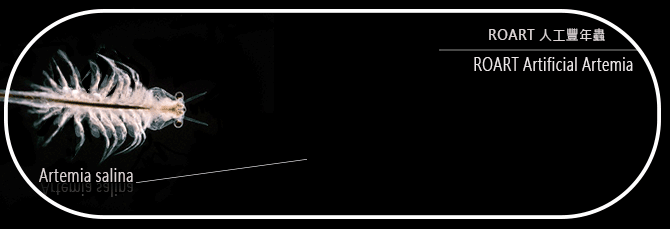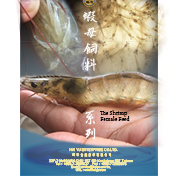Challenges and Responses to Shrimp Farming after Chushu (means the Stop of Summer)
Chushuis the fourteenth solar term among the twenty-four solar terms. The origin of the name of this solar term is mainly because "chu" means stop or end. This is the second solar term of autumn, marking the end of the hot summer and the gradual drop in temperatures. Although the extreme heat marks the end of summer, the temperature gradually drops after the extreme heat, which not only indicates a change in temperature, but alsothe weather is extremely unstable at this time. When summer and autumn exchanges, the temperature difference between day and night becomes larger, which is a big challenge to the shrimp farmers. During this transitional period, the challenges it brings cannot be ignored. During this period, aquaculture, especially shrimp farmers, must be particularly cautious. The secret to making money from shrimp farming is "Outperform the disease of shrimp and harvest before the disease breaks out." How to do it? The following are suggestions and operation instructions for the challenge of the harsh time:
1. Effects of temperature changes on shrimps
• Physiological stress response: Shrimp are cold-blooded animals, and drastic changes in water temperature will cause changes in the metabolic rate of the shrimp, thereby increasing the stress response, which may lead to a decrease in the shrimp's immunity and increase the risk of disease.
• Impact on the digestive system: Excessive temperature changes will affect the appetite of shrimp and the activity of digestive enzymes, which may reduce the feed conversion rate, thus affecting the growth rate.
2. Control measures and practices
• Keep the water body stable: When the temperature difference between morning and evening becomes large, you should try to keep the water body stable. This is very important, but how to achieve specific stabilization? The water body must be stable, and there must be enough good and powerful probiotics such as Bottom-SS in the water. The Bottom-SS series products are the best choice. Bottom-SS which selects strong and powerful strains. During this period, the pond bottom sometimes undergoes drastic changes due to weather and pressure factors. At this time, Bottom-SS has the effect of powerfully stabilizing the pond bottom.
• Enhance the aeration system: The temperature difference between morning and evening will cause changes in the amount of dissolved oxygen in the water body. Especially in the early morning, the dissolved oxygen may be insufficient. It is recommended to increase the operation of the aeration equipment, especially in the late night and early morning, to ensure that there is sufficient dissolved oxygen in the water body. How can we ensure that the dissolved oxygen (DO) reaches a high quality level of more than 5ppm in this season when the temperature, air pressure, and air flow change, especially at night? TheNegative Ion Nozzle System (NINS) is the answer, and NINS is the best weapon for farmers, used to cope with the storm-like changes at the bottom of the shrimp pond during this dangerous period. The sub-micron bubbles it generates are the most efficient among currently known dissolved oxygen equipment. Because the bubbles are the smallest, they stay in the water for the longest time. Because the bubbles are minimal, the dissolved oxygen is high and sufficient to meet the ever-changing COD and BOD needs of the shrimp pond bottom. It is a dissolved oxygen system specially designed for benthic aquatic organisms such as shrimp.
• Appropriately adjust the amount of bait and feeding frequency: Since temperature changes will affect the appetite of shrimp, the amount of bait and feeding frequency should be appropriately adjusted according to changes in weather and water temperature. Special attention should also be paid to the quality of the bait to ensure that it is nutritionally comprehensive and easy to digest. Haiyu feed has always been famous for its good digestibility and high absorption rate.
• Monitor water quality parameters: During seasonal changes, water quality parameters such as ammonia nitrogen, nitrite, pH, etc. should be monitored more frequently, especially changes in water temperature, dissolved oxygen and salinity. Maintaining good water quality is vital to shrimp health.
• Enhance immunity: Consider adding immune enhancers, such as Guda Immunobao, Guda Viami-500, and specific probiotics, such as HAI YU IA500, to the feed to enhance the shrimp's immunity and help them cope better environmental pressure. Continuously add Guda Immunobao, GUDA Supreme Vitamin for Aquaculture and antioxidants to the bait to help the shrimp strengthen their physique and resist the stress response caused by temperature changes.
• Preventing disease outbreaks: Special attention should be paid to preventing the spread of pathogens during this period. Low-concentration disinfectants can be used to disinfect the water regularly, and the behavior and health of the shrimp should be closely observed to detect and deal with any abnormalities early.
3. Coping with rapid shrimp pond bottom deterioration
• Appropriate water change: When the temperature difference is too large, you can change the water appropriately and replace part of the water body with a relatively stable water source to reduce the impact of the temperature difference on the shrimp. However, the water change process should be carried out slowly to avoid sudden changes in the water body.
• Enhance immunity: Continuously addGuda Immunobao and GUDA Supreme Vitamin for Aquaculture to the bait to help shrimps strengthen their physique and resist emergency reactions caused by temperature changes.
• Protecting and making shrimp pond bottom healthier: Buttom's series products are the key to reversing the deterioration of the shrimp pond bottom.
• Repairing the bottom of the shrimp pond: Superoxide is the best helper for repairing the bottom of the shrimp pond.
Conclusion
Temperature fluctuations at the turn of summer and autumn pose huge challenges to shrimp farming. The bottom of the pond may change or even worsen due to air pressure, (southwest) airflow, heavy rain, typhoons and other factors. However, as long as farmers can actively take the above measures, "protecting and making it healthier of the pond" can effectively reduce emergency response, eliminate the crisis, ensure the healthy growth of shrimp and "Outperform the disease of shrimp and harvest before the outbreak of shrimp disease."
Hakbe (Haiyu Aquaculture Knowledge Base Editor)
Chushuis the fourteenth solar term among the twenty-four solar terms. The origin of the name of this solar term is mainly because "chu" means stop or end. This is the second solar term of autumn, marking the end of the hot summer and the gradual drop in temperatures. Although the extreme heat marks the end of summer, the temperature gradually drops after the extreme heat, which not only indicates a change in temperature, but alsothe weather is extremely unstable at this time. When summer and autumn exchanges, the temperature difference between day and night becomes larger, which is a big challenge to the shrimp farmers. During this transitional period, the challenges it brings cannot be ignored. During this period, aquaculture, especially shrimp farmers, must be particularly cautious. The secret to making money from shrimp farming is "Outperform the disease of shrimp and harvest before the disease breaks out." How to do it? The following are suggestions and operation instructions for the challenge of the harsh time:
1. Effects of temperature changes on shrimps
• Physiological stress response: Shrimp are cold-blooded animals, and drastic changes in water temperature will cause changes in the metabolic rate of the shrimp, thereby increasing the stress response, which may lead to a decrease in the shrimp's immunity and increase the risk of disease.
• Impact on the digestive system: Excessive temperature changes will affect the appetite of shrimp and the activity of digestive enzymes, which may reduce the feed conversion rate, thus affecting the growth rate.
2. Control measures and practices
• Keep the water body stable: When the temperature difference between morning and evening becomes large, you should try to keep the water body stable. This is very important, but how to achieve specific stabilization? The water body must be stable, and there must be enough good and powerful probiotics such as Bottom-SS in the water. The Bottom-SS series products are the best choice. Bottom-SS which selects strong and powerful strains. During this period, the pond bottom sometimes undergoes drastic changes due to weather and pressure factors. At this time, Bottom-SS has the effect of powerfully stabilizing the pond bottom.
• Enhance the aeration system: The temperature difference between morning and evening will cause changes in the amount of dissolved oxygen in the water body. Especially in the early morning, the dissolved oxygen may be insufficient. It is recommended to increase the operation of the aeration equipment, especially in the late night and early morning, to ensure that there is sufficient dissolved oxygen in the water body. How can we ensure that the dissolved oxygen (DO) reaches a high quality level of more than 5ppm in this season when the temperature, air pressure, and air flow change, especially at night? TheNegative Ion Nozzle System (NINS) is the answer, and NINS is the best weapon for farmers, used to cope with the storm-like changes at the bottom of the shrimp pond during this dangerous period. The sub-micron bubbles it generates are the most efficient among currently known dissolved oxygen equipment. Because the bubbles are the smallest, they stay in the water for the longest time. Because the bubbles are minimal, the dissolved oxygen is high and sufficient to meet the ever-changing COD and BOD needs of the shrimp pond bottom. It is a dissolved oxygen system specially designed for benthic aquatic organisms such as shrimp.
• Appropriately adjust the amount of bait and feeding frequency: Since temperature changes will affect the appetite of shrimp, the amount of bait and feeding frequency should be appropriately adjusted according to changes in weather and water temperature. Special attention should also be paid to the quality of the bait to ensure that it is nutritionally comprehensive and easy to digest. Haiyu feed has always been famous for its good digestibility and high absorption rate.
• Monitor water quality parameters: During seasonal changes, water quality parameters such as ammonia nitrogen, nitrite, pH, etc. should be monitored more frequently, especially changes in water temperature, dissolved oxygen and salinity. Maintaining good water quality is vital to shrimp health.
• Enhance immunity: Consider adding immune enhancers, such as Guda Immunobao, Guda Viami-500, and specific probiotics, such as HAI YU IA500, to the feed to enhance the shrimp's immunity and help them cope better environmental pressure. Continuously add Guda Immunobao, GUDA Supreme Vitamin for Aquaculture and antioxidants to the bait to help the shrimp strengthen their physique and resist the stress response caused by temperature changes.
• Preventing disease outbreaks: Special attention should be paid to preventing the spread of pathogens during this period. Low-concentration disinfectants can be used to disinfect the water regularly, and the behavior and health of the shrimp should be closely observed to detect and deal with any abnormalities early.
3. Coping with rapid shrimp pond bottom deterioration
• Appropriate water change: When the temperature difference is too large, you can change the water appropriately and replace part of the water body with a relatively stable water source to reduce the impact of the temperature difference on the shrimp. However, the water change process should be carried out slowly to avoid sudden changes in the water body.
• Enhance immunity: Continuously addGuda Immunobao and GUDA Supreme Vitamin for Aquaculture to the bait to help shrimps strengthen their physique and resist emergency reactions caused by temperature changes.
• Protecting and making shrimp pond bottom healthier: Buttom's series products are the key to reversing the deterioration of the shrimp pond bottom.
• Repairing the bottom of the shrimp pond: Superoxide is the best helper for repairing the bottom of the shrimp pond.
Conclusion
Temperature fluctuations at the turn of summer and autumn pose huge challenges to shrimp farming. The bottom of the pond may change or even worsen due to air pressure, (southwest) airflow, heavy rain, typhoons and other factors. However, as long as farmers can actively take the above measures, "protecting and making it healthier of the pond" can effectively reduce emergency response, eliminate the crisis, ensure the healthy growth of shrimp and "Outperform the disease of shrimp and harvest before the outbreak of shrimp disease."
Hakbe (Haiyu Aquaculture Knowledge Base Editor)





